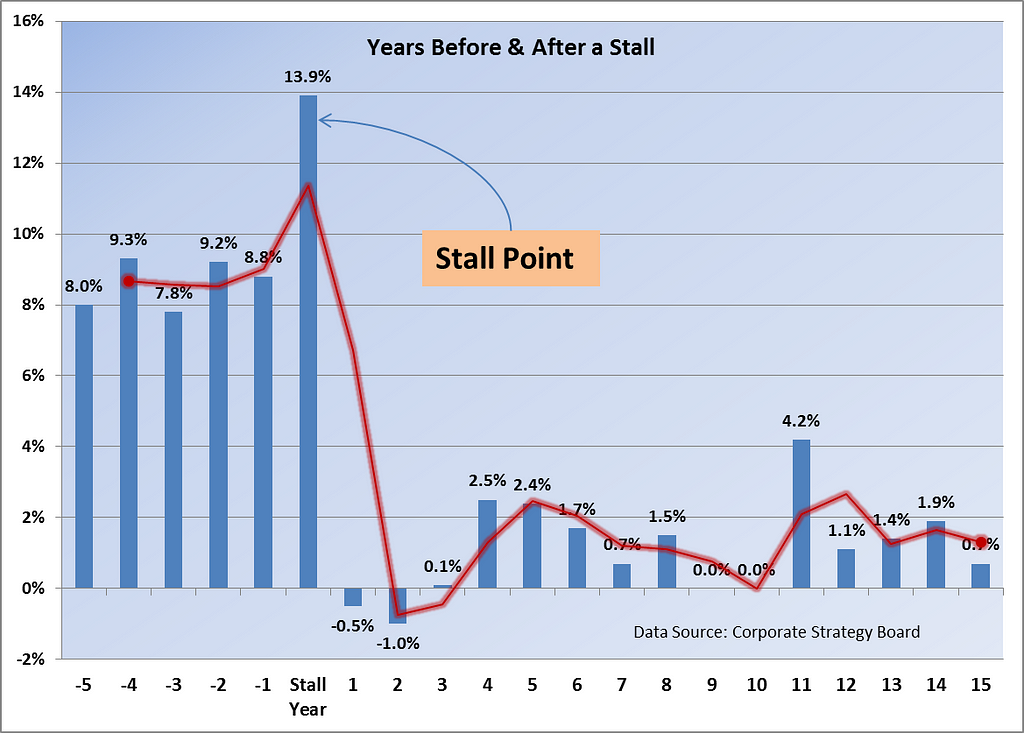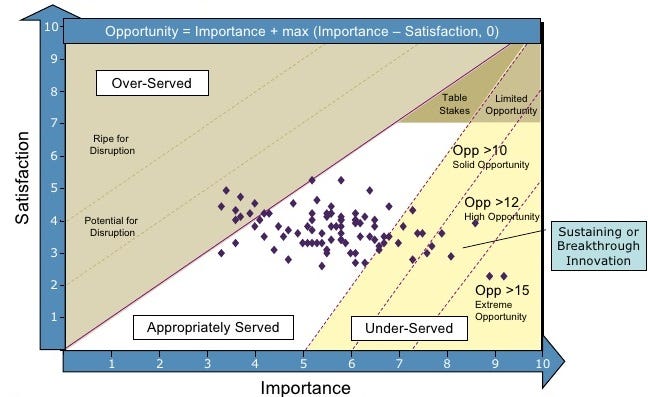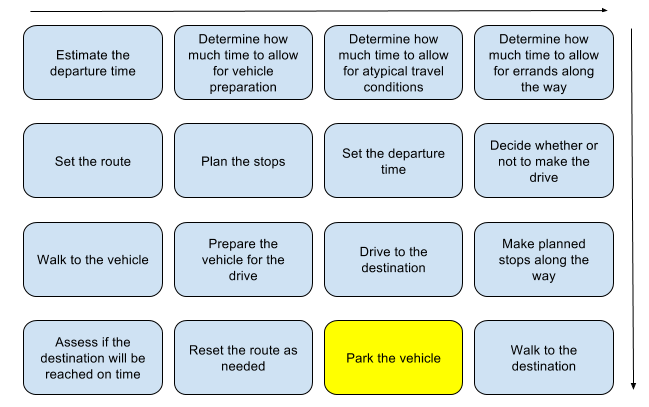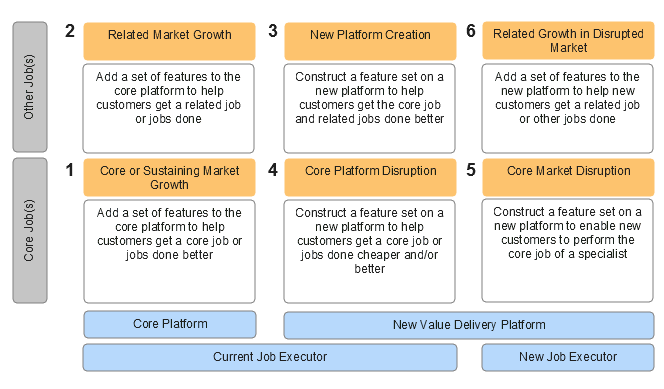Hypothesis: A product or service innovator can determine the best market opportunity, the optimal growth path, and/or an exit strategy before they build their product
To begin, this is one of those touchy subjects because everyone involved in this world is pretty smart, and has an opinion. Some are personally very successful — e.g. venture capitalists — and some believe they are going to be successful — e.g. founders. There is no arguing with them and I don’t intend to argue with them. Instead, I will just lay my thoughts down, and begin by reminding everyone of some basic facts that very few have demonstrated an ability to overcome.
Fact #1: 95% of new product or service launches fail in some form or fashion— elaborated by the following facts; especially the growth one
Fact # 2: Only 5% of companies are able to sustain a real, inflation-adjusted growth rate of more than 6%
Fact #3: 95% of companies reach a point where growth simply stalls to rates at or below the rate of growth of GNP
Fact #4: Only 4% of the companies whose rate of growth stalls are able to successfully reignite growth to even 1% above the GNP rate of growth

These facts should tell us not to trust our intuition. Yet, we build investment strategies based on getting that one big home run; when there is no guarantee that it’ll come (using traditional methods). If there were, we’d only be funding the home runs, wouldn’t we?
Now I’ll move on to some broadly unaccepted assumptions:
Assumption #1: Founders’ ideas are worth nothing — nor is the value of each subsequent idea after the first one fails. In fact, my ideas are worth nothing as well (so there you go).
Assumption #2: Investors are seemingly no better at predicting product success than founders. They just spread their — or other people’s — money around and hope for the best. Come on, you know it’s true, or you’d rarely invest in failures
Assumption #3: Creative people are absolutely needed to design solutions (products and services). But these are not the people that should be doing the targeting or core problem solving — i.e., identifying markets and/or growth strategies. Stick with what you’re good at. The problem space is not the same as the solution space, and I’m not talking about design challenges
Assumption #4: Nearly everyone misunderstands what a customer need is — instead they use proxies like Voice of the Customer and recommend that we should get out of the building or do a switch interview. This essentially means that we have no common language around innovation. And we can’t create a successful product or service that satisfies only one need. There is an entire catalog of needs against which customers will evaluate a solution, and a hierarchy of needs when we consider all of the dimensions necessary to support the experience of consuming our solution. Most problems, and their solutions, are more complex than milkshakes
Assumption # 5: Where we do have a common understanding, we are simply wrong. A market is not defined by products or product categories, and meaningful segments are not built-up from demographics, firmographics, or even the time of day. I know that’s how you do it…I’m saying your wrong! And don’t get me started on personas!
If you disagree with this, then you are a 95 percenter.
My purpose for writing this is to respond to the suggestion that you can’t develop an exit strategy prior to building a product or service. In the world of product development — as it is bound by the the facts I listed above — I completely understand that suggestion. I also understand why failure-based concepts like fail-fast emerged since we do understand that failure is common; so we construct solutions that focus on that problem.
So the suggestion that you can’t identify an exit strategy in advance seems logical in a world where we can’t even predict the success of our ideas. Exit strategies are a success strategy, and it seems as though we can predict neither. Building failure into our plan, therefore, seems like a no-brainer to many people. The best path forward is to be really good at something we can actually predict…failure.
Sexy Methods Haven’t Helped
There is nothing about the failing fast approach to innovation that changes the facts I began with in this post. Some have tried cherry-picking examples — that they had nothing to do with. Think about it, if you were to strip Mark Zuckerberg of his fame, connections, and fortune, it is highly unlikely that he could reproduce his success. He’d just be another intelligent geek wearing a grey t-shirt. If you believe otherwise, I’m willing to listen to your facts. However, I doubt he woke up at Harvard one day with a systematic approach — and roadmap — to build what he has built…
…and we will see how long this keeps up. Long-standing brands have come and gone, all-the-while thinking they controlled an unassailable platform. Companies that define (and defend) their markets and opportunities around their product offerings will always fail at some point because they are simply current solutions. Eastman Kodak, DeLorean, WebTV, Bottled Water for Pets…the list goes on.
Defining Markets and Growth Opportunities
If you can define and evaluate a market properly…
- e.g., what job or task is a particular group of people trying to get done?
- e.g., what performance metrics do they use to evaluate how well the job(s) is getting done? (the value model)
- e.g., how large is this market and what price are people willing to pay for a better solution? How much better does it need to be?
- e.g., how well are current solutions satisfying the market’s needs? Can you quantify it?
- e.g., does one market have more opportunity than another — given the above factors, as well as your your ability to take solutions to market using your existing — or acquirable — capabilities?
…you’ll be 5 times as likely to succeed as everyone else. This puts success at the center so we can focus on how best to achieve it before we invest too much time and money.
A forward-looking view with Jobs Theory
The problem for those that haven’t investigated jobs theory — because it’s too inconvenient — is that they will continue to define markets the way the advertisers, or some other existing infrastructure, wants them to. But, if you change your frame of reference and employ a set of well-developed and straight-forward tools — albeit, a teeny bit more inconvenient (boo hoo) — you’ll be able to…
- Understand markets and market potential significantly better than your competitors (or their investors)
- Determine in advance whether to build capabilities yourself, or acquire them; with a greater deal of precision than others are capable of today
- Catalog every single customer need for that market, currently met, currently unmet, and currently over-served so you can monitor changes in the market and update your roadmap accordingly — with ease. This is harder than it sounds, but there is a method for it that not so bright people like me can follow

- Understand up-front when you’re building something that is a feature that an incumbent (platform) might value, that they currently can’t see (because they’re old school!). Plan to sell it to them before they decide to build it themselves, by leveraging your unique market perspective and supporting data. Make it easy for them so you can move on to the next innovation (rinse and repeat, don’t get too greedy).
Case in point, don’t build a parking app when “Park the vehicle” is simply one step (a feature) in the larger job of “getting to a destination on time” unless you go into the project knowing you will either need to get the other steps done (BETTER, and before incumbents notice), or that the platform that already gets many of those steps done would be interested in buying you out so their solution gets more steps done for their customers (your exit strategy)

- Understand your possible growth paths so you don’t hit a dead-end like most everyone else (see stall points chart)

I have such grandiose ideas when I begin writing these posts, and then reality sets in and I have to resort to providing reference links because I just don’t have enough time. This stuff (real jobs-to-be-done) has been hiding in plain sight for quite awhile now. So much so, that a bunch of fast-followers are trying to make some hay from it by selling training courses and talks that mis-identify jobs and over-simplify how to use this focal point for innovation. It’s sad that there’s an audience for that.
Nothing is that easy folks
If you really want to understand why you should be able to predict your product and service success with great precision, and even why you should be able to target the appropriate exit strategy up front, I urge you to spend a little time at the following locations. I know a simple post won’t convince anyone — learning is hard work. There is much better writing than mine on the subject.
Websites
- www.strategyn.com — creators of an operationalized innovation platform running on Jobs Theory
- www.jtbdinstitute.com — a curated and balanced site that keeps track of most things written on the subject of jobs-to-be-done; even the whacky stuff
Original Jobs-to-be-Done Books I Recommend
- What Customers Want: Using Outcome-Driven Innovation to Create Breakthrough Products and Services: Using Outcome-Driven Innovation to Create Breakthrough … (Marketing/Sales/Advertising & Promotion)
- Jobs to be Done: Theory to Practice
- Service Innovation: How to Go from Customer Needs to Breakthrough Services
If you can’t identify an exit strategy, you can’t identify your market #jtbd was originally published in Effective CRM through JTBD on Medium, where people are continuing the conversation by highlighting and responding to this story.



